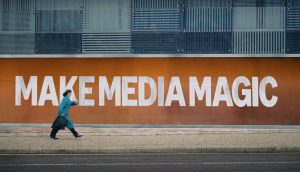It seems like just yesterday, buyers were switching over to their summer wardrobes and enjoying their first taste of patio weather, gathering for a post-pitch sangria in the sunshine. Now, the back-to-school campaigns have launched, the sun is setting earlier and if you look closely – very closely – you can see the leaves changing colours.
And with a change of season comes yet another opportunity for advertisers to take a look back at their plans and re-evaluate where the money needs to go. While much of the upcoming Fall TV lineup has already been bought against, CARD has reached out to investment and strategy-focused buyers at various Canadian agencies to know what shake-ups they’d like to see in media investment this season.
Sarah Thompson, CSO, Mindshare
We are seeing clients shifting the pendulum back to investing in brand building. Marketers got excited about the data and the capabilities to drive that last few steps of the customer journey and, rightfully so, built performance marketing into their plans – but many went too far and abandoned their brand for chasing clicks. This had a great deal to do with the challenge of showing a ROI of brand.
But when you turn off the marriage of great creative storytelling in brand building channels, the performance marketing and promotional marketing also start to suffer. More investment in brand is being built back into plans and with this TV, radio, content. And, great video marketing is on the upswing. How your brand is felt in the experience of media is also something we talk about – especially if you have a purpose and it needs to consider more than message, medium matters.
The new advertising opportunities of marketplaces like Amazon, Walmart and Loblaw is something our clients are exploring to see what it can do to move more product. Online sales is a fast-growing opportunity for CPG brands especially with the speed of delivery and price benefit that consumers can gain. That middle of the store is now the online shopping experience.
For our clients, we are recommending understanding that the volume of people looking for products is not what you expect and that to buy into these environments is premium, and to not shift too far away from brand building initiatives and to truly consider the attribution data you are getting back.
Treva Goodhead, VP of investments, Magna
We’re increasingly looking to the connected TV world – like Roku or Samsung Ads – to ensure our clients are talking to those audiences who may not subscribe to traditional TV services. Corus’ StacTV on Amazon Prime Video Channels is also of interest and we’re intrigued to see what the adoption rate will be.
[For more established media], location-based marketing continues to offer new campaign concepts. Programmatic digital OOH campaigns driven by actionable data are immensely valuable, and our Special Business Units at Cadreon and Reprise highly recommend them. The combination of the ubiquity of digital OOH advertising placements and highly targetable data points can make for interesting sequential messaging opportunities. The cherry? They can be combined with peoples’ mobile devices.
According to MTM data, media time with audio in its various forms is growing and the ability to target audio messages is becoming increasingly easier. If the same message can be heard on satellite, on radio, in podcasts, and via numerous audio streams, integrating and aligning the various audio delivery systems into one campaign makes sense. Understanding audio as inclusive of podcasts and streaming will drive greater usage of Spotify and other services.
Lina Kim, group account director, Havas
One area of media we are trying to push more and more is leveraging content partnerships and integrating our brands within the passion points of consumers.
The media landscape continues to get more cluttered – there is a reason why market leaders like Netflix still use the subscription mode versus ads. But companies like Netflix are also savvy enough to find other ways to partner with brands and monetize – 74% of its original content includes product placement.
What this means for us on the media side is: rather than simply place your creative using the standard TV GRP buy, for instance, how can we work with our partners to develop interesting and relevant custom content or strategically integrate a brand within or alongside existing content?
A great examples of this is work we’ve done on New Balance last year with Blue Ant and theScore and how well the custom content resonated with consumers and ways we amplified to build reach. We also just recently worked with Bell on a Love Island integration for the first-ever North American version of this very popular format. Other examples from other agencies is the Baskin Robbin’s/Scoops Ahoy/Stranger Things activation, the Reese’s ASMR movie amplified on Crave, and Justin Long’s hilarious McDonald’s Canada paid podcast read.
Beyond where you invest, it’s also a speed and timing game. Ultimately, we like to encourage all clients is to be nimble – be flexible and quick enough to take advantage of relevant cultural moments and invest in kind.
The number of not-so-great Instagram ads and brands jumping on the bandwagon during the Raptors NBA championship race allows us to assess who got it right and who was just bandwagoning. We can’t always predict when and what those moments will be, but thinking ahead can help a brand be ready to jump on those most often fleeting opportunities. Great example here: Tim Hortons’ “Superfan” video honouring Nav Bhatia, who became known almost overnight for his devotion to the Raptors.
























